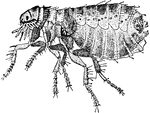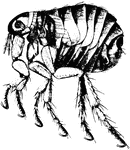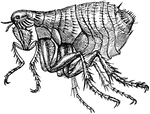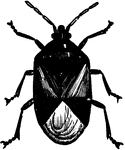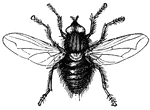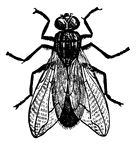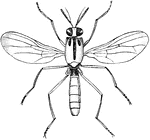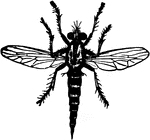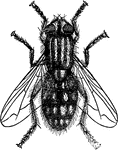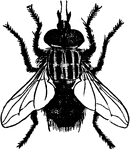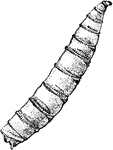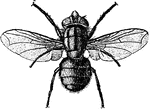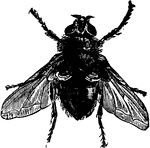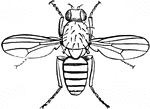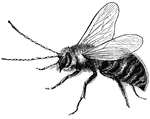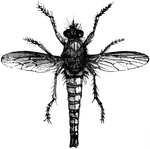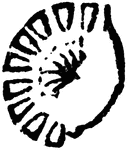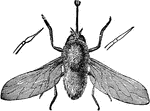This gallery includes 949 illustrations of other orders of insects.
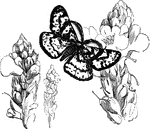
Fidonia Plumistaria
"The European Fidonia Plumistaria, is distinguised by its curious feathery antennae." —…

Fig Insect
"The fig insect will not lay eggs in the Smyrna fig, but only in the wild fig; therefore one individual…

Fish-Killing Buffalo Gnat Larva
"They are small hump-backed gnats, of a gray or blackish color, with broad pale wings." —Whitney,…
Flat-Headed Borer
Flat-Headed Borer is the common name of Chalcophora virginiensis. The insect extendsd its flattened…

Flea
the flea has a curios apparatus for sucking blood, which is very beautiful as examined with a microscope…

Flea
Fleas are parasites. That is any plant or animal which feeds upon another living plant or animal without…

Flea
Fleas are parasites. That is any plant or animal which feeds upon another living plant or animal without…

Flea
"Aphaniptera includes the fleas, which, despite their minuteness, have made themselves a name in the…

Flea
An illustration of a common flea. Once the flea reaches adulthood its primary goal is to find blood…

Flea (Pulex Irritans)
"The common Flea has an oval body, somewhat flattened, and covered with a rather horay skin."

Flea Larva
An illustration of the larva of a common flea. Flea larvae emerge from the eggs to feed on any available…

Flea Pupa
An illustration of the pupa of a common flea. After going through three larval stages they spin a silken…
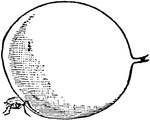
Chigoe Flea (Female)
The chigoe flea (Tunga penetrans) is a parasitic arthropod found in tropical climates, especially South…
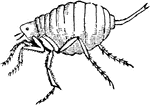
Chigoe Flea (Male)
The chigoe flea (Tunga penetrans) is a parasitic arthropod found in tropical climates, especially South…

Human Flea
The human flea (Pulex irritans) is a parasitic insect that actually has several hosts despite its name.
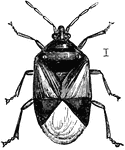
Insidious Flower Bug
The Insidious Flower Bug is an insect in the Heteroptera suborder of true bugs.

Flies
"In these the head is generally of considerable size, and is furnished with a pair of large, compressed…

Saw Fly Hovering Above a Plant
A group of insects belonging to the order Hymenoptera, and distinguished by the peculiar confirmation…
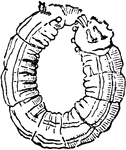
Cheese Fly Larva
Cheese flies are members of the family Piophilidae of flies (Diptera), including the members of two…
Robber Fly Larva
The larva of Efferia aestuans (or Erax bastardi), an insect in the Asilidae family of robber flies.

Robber Fly Pupa
The pupa of Efferia aestuans (or Erax bastardi), an insect in the Asilidae family of robber flies.

Blue-Bottle Fly Stages
"Larva, pupa, and adult of blue-bottle fly (Musca vomitoria)." -Thomson, 1916
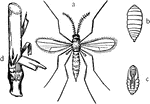
Hessian Fly Stages
"The Hessian Fly (Cecidiomya destructor). a, the adult; b, larva; c, pupa; d, larvae in position on…
